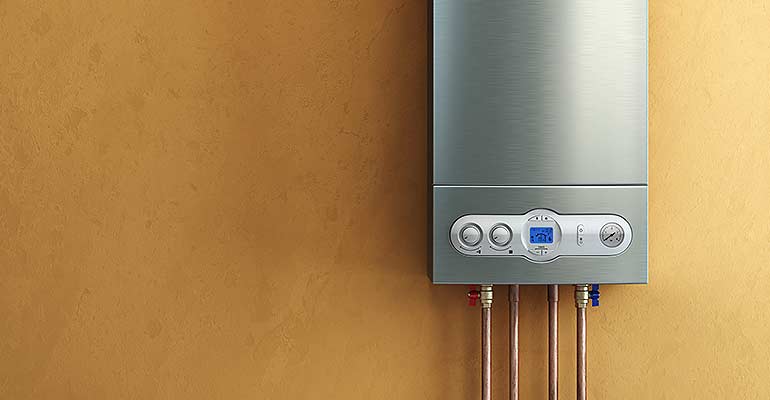Are you currently trying to find guidance involving Tips For Maintaining Your Hot Water Heater?

Warm water is necessary for everyday convenience, whether it's for a rejuvenating shower or washing meals. To ensure your hot water system runs efficiently and lasts much longer, routine maintenance is essential. This article gives sensible pointers and insights on how to preserve your home's hot water system to avoid disruptions and costly fixings.
Intro
Preserving your home's hot water system might seem overwhelming, yet with a couple of easy actions, you can guarantee it operates smoothly for several years ahead. This guide covers every little thing from comprehending your hot water system to do it yourself maintenance pointers and understanding when to employ professional aid.
Significance of Keeping Your Hot Water System
Regular upkeep not only prolongs the lifespan of your hot water system yet also guarantees it runs effectively. Ignoring upkeep can lead to reduced efficiency, greater energy bills, and also premature failing of the system.
Indications Your Hot Water System Requirements Maintenance
Recognizing when your hot water system requires interest can prevent significant problems. Keep an eye out for indications such as inconsistent water temperature level, unusual sounds from the heating unit, or corroded water.
Comprehending Your Hot Water System
Prior to diving into upkeep tasks, it's practical to understand the fundamental parts of your hot water system. Usually, this consists of the hot water heater itself, pipes, anode rods, and temperature level controls.
Monthly Maintenance Tasks
Routine month-to-month checks can help catch small issues before they intensify.
Purging the Hot Water Heater
Flushing your hot water heater gets rid of sediment buildup, enhancing performance and lengthening its life.
Checking and Replacing Anode Rods
Anode poles protect against deterioration inside the tank. Examining and replacing them when worn is vital.
Evaluating and Adjusting Temperature Settings
Adjusting the temperature setups makes sure optimum efficiency and safety.
DIY Tips for Maintenance
You can do a number of maintenance tasks yourself to maintain your warm water system in leading problem.
Looking for Leakages
Regularly inspect pipes and connections for leaks, as these can lead to water damage and higher expenses.
Evaluating Pressure Relief Valves
Checking the stress safety valve guarantees it works properly and stops too much stress accumulation.
Protecting Pipelines
Protecting warm water pipelines minimizes warm loss and can save energy.
When to Call an Expert
While DIY maintenance is advantageous, some issues require professional proficiency.
Complex Issues Requiring Specialist Aid
Instances consist of major leaks, electrical problems, or if your hot water heater is consistently underperforming.
Routine Specialist Upkeep Advantages
Professional maintenance can consist of detailed examinations, tune-ups, and guaranteeing conformity with safety and security requirements.
Final thought
Regular upkeep of your home's warm water system is necessary for efficiency, long life, and expense savings. By following these pointers and understanding when to seek specialist assistance, you can guarantee a dependable supply of warm water without unforeseen disruptions.
How to Maintain an Instant Hot Water Heater
Before tinkering with your hot water heater, make sure that it’s not powered on. You also have to turn off the main circuit breaker and shut off the main gas line to prevent accidents. Also turn off the water valves connected to your unit to prevent water from flowing into and out of the appliance. 2. When you’re done, you have to detach the purge valves’ caps. These look like the letter “T†and are situated on either side of the water valves. Doing so will release any pressure that has accumulated inside the valves while at the same time avoid hot water from shooting out and burning your skin. 3. When the purge valves’ caps are removed, you have to connect your hosing lines to the valves. Your unit should have come with three hoses but if it didn’t, you can purchase these things from any hardware or home repair shops. You can also get them from retail stores that sell water heating systems. Read the user’s manual and follow it to complete this task properly. When the hosing lines are connected, open the purge port’s valves. 4. You should never use harsh chemical cleaners or solutions when cleaning your unit. Make use of white vinegar instead. It should be undiluted and you’ll probably use about 2 gallons. 5. Now flush your water heater. This task should probably take about 40 minutes. We can’t give you specific directions for this because the procedure is carried out depending on the type, model and brand of your heater. With that being said, refer to the user’s manual. 6. When you’re done draining the unit, you have to turn off the purge port valves again. Remove the hosing lines that you earlier installed on each of the water valves. Put the valve caps (purge port) back in their respective places and be very careful so as not to damage the rubber discs that are found inside these caps. 7. Now that everything’s back in place, check your user’s manual again to find out how to reactivate your water heating system. 8. Once it is working, turn one of your hot water faucets on just to let air pass through the heater’s water supply pipes. Leave the tap on until water flows smoothly out of it. https://www.orrplumbing.com/blog/2014/september/how-to-maintain-an-instant-hot-water-heater/

We hope you liked our article on What Kind of Maintenance Do Water Heaters Need?. Thank you for finding the time to read through our article. I beg you set aside a second to distribute this article if you liked it. We treasure reading our article about How to Maintain a Hot Water Heater in a Few Simple Steps.
Call Today